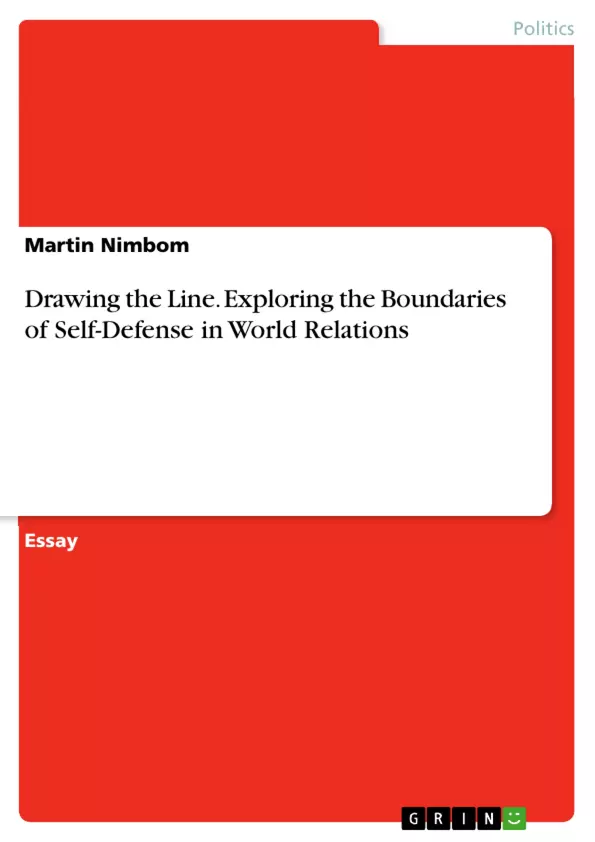The law of recourse to force has changed dramatically over the last centuries. The concept of self-defense plays a fundamental role in international relations, shaping the interactions between states and defining the boundaries of acceptable behavior in the global arena. This research endeavors to delve into the complexities surrounding the application and interpretation of the principle of self-defense. By examining historical case studies, international legal frameworks, and contemporary geopolitical events, this study aims to shed light on the multifaceted dimensions of self-defense and the delicate balance between state sovereignty and collective security.
The research begins by analyzing the evolution of ‘force’ and self-defense norms and doctrines, tracing their origins from customary international law to the modern legal framework established by the United Nations. It equally investigates the category of force for which self-defense becomes permissible. Furthermore, this research examines critically the debate on the boundaries of self-defense, and questions whether existing legal frameworks adequately address this contemporary challenge.
By exploring these intricate dynamics, this research aims to contribute to the ongoing discourse on self-defense, especially in the light of Russia’s special military operation in Ukraine, and to provide insights into the evolving nature of international law and norms. It seeks to stimulate further dialogue among policymakers, legal experts, and scholars, with the ultimate goal of fostering a more nuanced understanding of self-defense and its implications for global peace and stability.
Table of Contents
- 1.1 Introduction:
- 1.2. What therefore is Self-Defense under international law?
Objectives and Key Themes
This research aims to delve into the complexities of self-defense in international relations, focusing on the evolution, application, and contemporary challenges of this principle. It seeks to contribute to the ongoing discourse on self-defense, particularly in the light of the Russo-Ukrainian Conflict, by providing insights into the evolving nature of international law and norms.
- Evolution of the 'force' and self-defense norms and doctrines
- The boundaries and limitations of self-defense in contemporary conflicts
- The delicate balance between state sovereignty and collective security
- Legal justifications, challenges, and implications of the use of self-defense
- Impact of self-defense on international peace and security
Chapter Summaries
- 1.1 Introduction: This chapter introduces the central role of the law governing resort to force in international law, outlining the historical evolution of the 'Just War' doctrine and the emergence of the modern legal framework established by the United Nations.
- 1.2. What therefore is Self-Defense under international law?: This chapter delves into the traditional definition of self-defense as established by the Caroline's Case, outlining the key considerations of necessity and proportionality. It further explores the right of self-defense as a creation of customary international law and its co-existence with treaty law, supported by examples such as the Kellogg-Briand Pact and the Tokyo Judgment.
Keywords
This research delves into key terms and concepts like self-defense, international law, state sovereignty, collective security, armed attacks, necessity, proportionality, customary international law, and the Russo-Ukrainian Conflict.
- Arbeit zitieren
- Martin Nimbom (Autor:in), 2023, Drawing the Line. Exploring the Boundaries of Self-Defense in World Relations, München, GRIN Verlag, https://www.hausarbeiten.de/document/1415901


